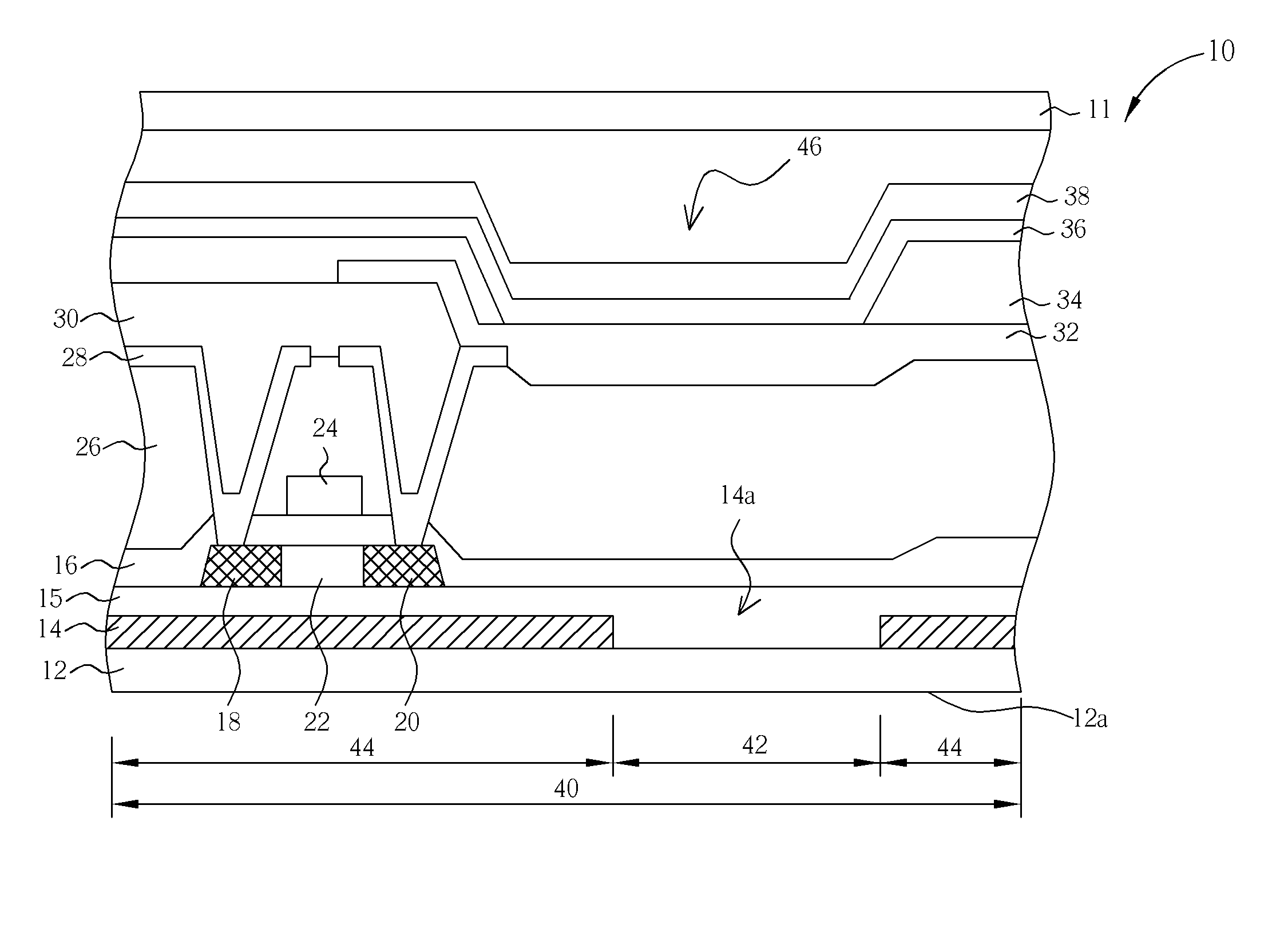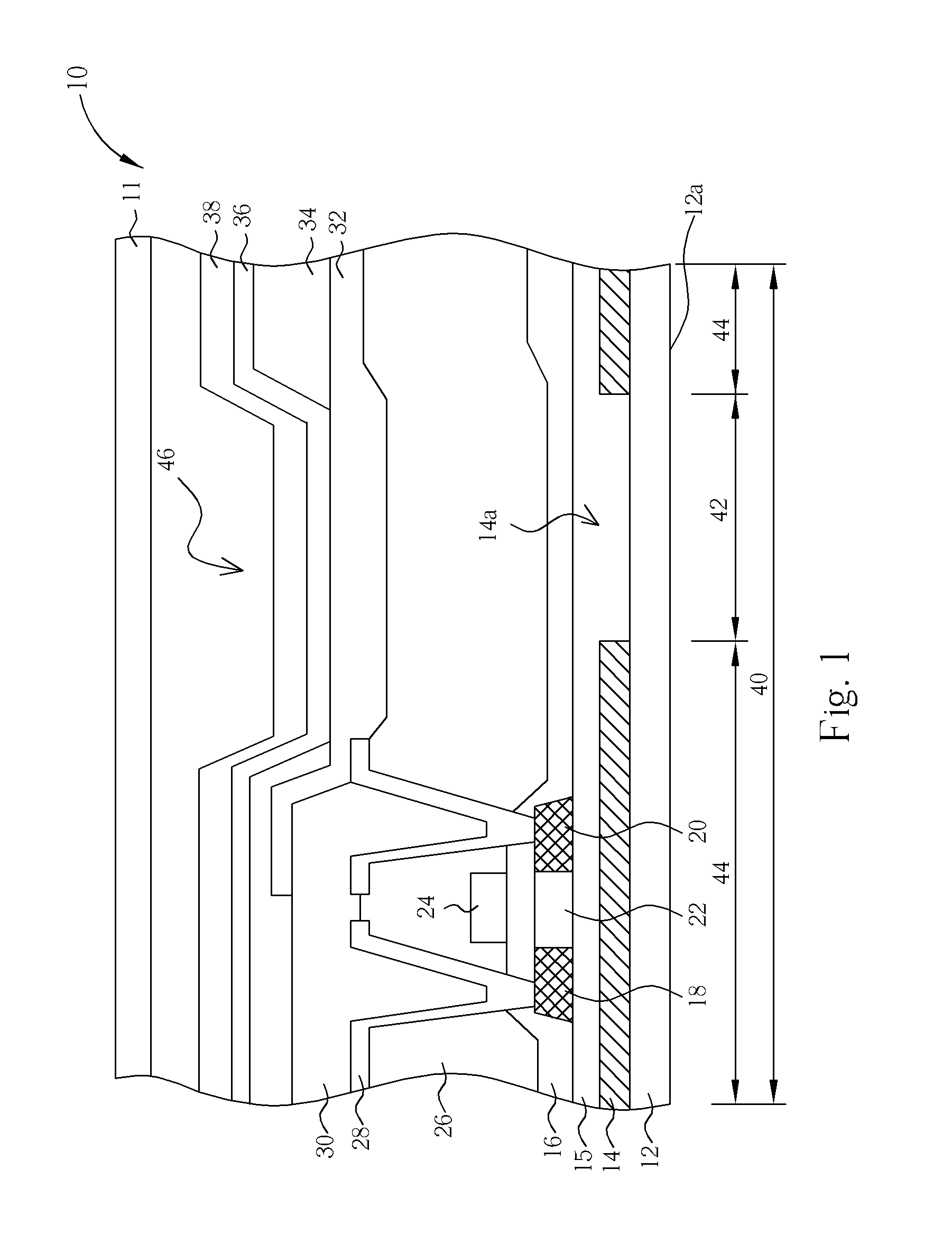Organic light emitting display
- Summary
- Abstract
- Description
- Claims
- Application Information
AI Technical Summary
Benefits of technology
Problems solved by technology
Method used
Image
Examples
Embodiment Construction
[0014] Please refer to FIG. 1. FIG. 1 is a side cross-section schematic diagram of an OLED 10 of this invention. In this figure, only one single sub-pixel 40 was shown and used for explanation. As shown in FIG. 1, the OLED 10 of this invention comprises a first substrate 11 and a second substrate 12, wherein the first substrate 11 and the second substrate 12 are parallel to each other and jointed by sealant (not shown in the figure) to maintain a fixed spacing between them. According to this embodiment, the OLED 10 is a rear emission type panel. Therefore, the surface 12a of the second substrate 12 facing away from the first substrate 11 is the display surface 12a of the OLED 10. The second substrate 12 is made of transparent materials such as glass, plastic, quartz, or other transparent materials. The first substrate 11 may be made of either transparent materials or non-transparent materials. The second substrate 12 comprises a plurality of sub-pixels 40, each of which comprises an...
PUM
 Login to View More
Login to View More Abstract
Description
Claims
Application Information
 Login to View More
Login to View More - R&D
- Intellectual Property
- Life Sciences
- Materials
- Tech Scout
- Unparalleled Data Quality
- Higher Quality Content
- 60% Fewer Hallucinations
Browse by: Latest US Patents, China's latest patents, Technical Efficacy Thesaurus, Application Domain, Technology Topic, Popular Technical Reports.
© 2025 PatSnap. All rights reserved.Legal|Privacy policy|Modern Slavery Act Transparency Statement|Sitemap|About US| Contact US: help@patsnap.com



